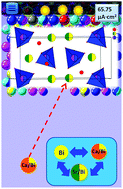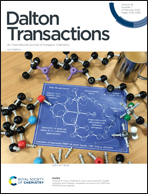Scheelite-related M IIxBi1−xV1−xMoxO4 (MII – Ca, Sr) solid solution-based photoanodes for enhanced photoelectrochemical water oxidation†
Abstract
The photoelectrochemical properties of scheelite-related MIIxBi1−xV1−xMoxO4 (MII = Ca, Sr, x = 0.1 to 0.9) solid solutions deposited on conductive glass (coated with SnO2, F-doped) have been investigated as photoanodes in photoelectrochemical (PEC) water splitting. The variation of the final annealing temperature during the preparation of the conduction electrodes as well as the value of substitution x have been shown to affect the PEC performance. The micropowders of MIIxBi1−xV1−xMoxO4 (MII = Ca, Sr, x = 0.1 to 0.9) samples were first fabricated vi a solid-state method; they were characterised by SEM microscopy and powder and single crystal X-ray diffraction, and the band gap values were estimated using diffusive reflectance data. The value of substitution x = 0.1 in the cases of samples containing calcium and strontium affords the highest PEC performance reported for the whole range of substitution. These results demonstrate a promising approach for the beneficial utilization of BiVO4-substituted scheelite-related solid solutions in photo-electrochemical cells towards efficient and inexpensive photoanodes.



 Please wait while we load your content...
Please wait while we load your content...